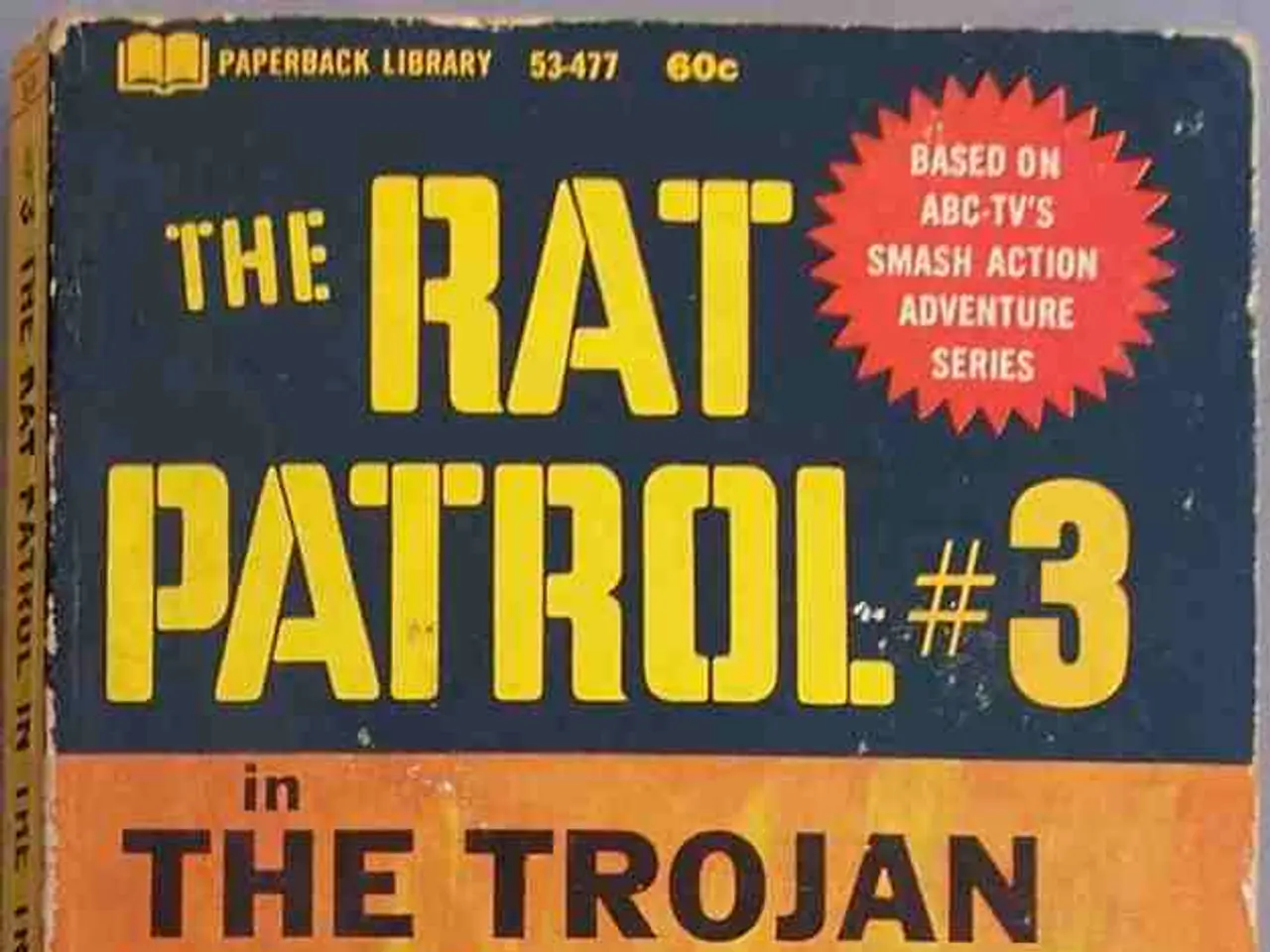Unauthorized Access to Systems: The Instance at Churchill's Toy Store
In the tumultuous years leading up to World War II, a secret research and development unit was established by the British government - the Ministry of Defence 1 (MD1), also known as "Churchill's Toy Shop." This clandestine organisation was tasked with developing innovative and unconventional weapons to counter the unpredictable challenges of war. Although specific details about the weapons developed by MD1 are not widely documented, it was known for its focus on experimental and sometimes unorthodox military technology.
One of the most intriguing innovations to emerge from MD1 was the sticky bomb. Engineered by the team, this device was designed to adhere to and detonate against tanks and armoured vehicles. The sticky bomb was packaged in a shell with a handle for throwing, and its casing was initially created using metal salad bowls from a five and dime store. The bomb consisted of a glass sphere containing 1 1/4 pounds (1/2 kg) of nitroglycerine, wrapped in a fabric covering soaked in birdlime, a sticky substance. Despite its flaws, such as the tendency for the handle to fly back towards the thrower like a bullet when it detonated, the sticky bomb was successful and produced in large numbers. It saw service in many theatres of the war and was even provided to the French Resistance for guerrilla activities.
Another notable innovation from MD1 was the limpet mine, named after its resemblance to the shellfish of the same name. This mine was designed to be strapped to a frogman and had a spring-activated trigger with a slow dissolving ball of hard candy holding the plunger back, allowing the frogman time to get away. The limpet mine was also used in irregular warfare, particularly against enemy shipping.
Lt. Col. Joe Holland of the Royal Engineers and Major Millis Jefferis led MD1 and were involved in the active invention and testing of weapons. Cecil Clarke, an inventor acquaintance, also joined the team to work on the magnetic mine and the sticky bomb. Stuart Macrae, a former sapper and editor of a popular science magazine, also joined MD1 to help with the development of the magnetic mine.
In addition to the sticky bomb and the limpet mine, MD1 was also responsible for the "Great Eastern Ramp," a bridging tool attached to a tank that used rockets to shoot ramps over obstacles. This innovative device demonstrated MD1's commitment to finding solutions to the unique challenges of war.
While the time pencil, a self-contained timer and detonator for larger charges, was not developed by MD1, it was another lethal innovation from the era. The time pencil was used in the plot to assassinate Hitler in 1944, but he was shielded from the brunt of the explosion and survived.
The innovations developed by MD1, including the sticky bomb and the time pencil, were manufactured in the millions and likely took countless lives. Despite their lethal nature, these innovations showcase the innovative spirit of the era and the lengths to which nations would go to gain an advantage in war.
Other notable innovations from the World War II era, not necessarily by MD1 but reflecting the era's innovative spirit, include Barnes Wallis' bouncing bombs, used in the famous "Dambusters" raid in 1943, and the V-1 Flying Bomb, a significant weapon developed by the Germans. These inventions underscore the importance of innovation in warfare and the impact it can have on the course of history.
- The innovative spirit of the World War II era is exemplified by the development of hardware, such as the sticky bomb and the limpet mine, by the Ministry of Defence 1 (MD1), which were used extensively in war-and-conflicts and contributed to the unique challenges faced by various political parties.
- Hacking and politics intertwined in the creation of the time pencil, a self-contained timer and detonator for larger charges, which, though not developed by MD1, was involved in attempts to impact historical events, such as the 1944 plot to assassinate Adolf Hitler.
- In the realm of technology and general-news, the World War II era also witnessed the innovation of unconventional weapons like Barnes Wallis' bouncing bombs, utilized in the famed "Dambusters" raid of 1943, and the V-1 Flying Bomb, a significant weapon developed by the Germans, which demonstrate the vital role of invention and technology in warfare and its impact on the course of history.




